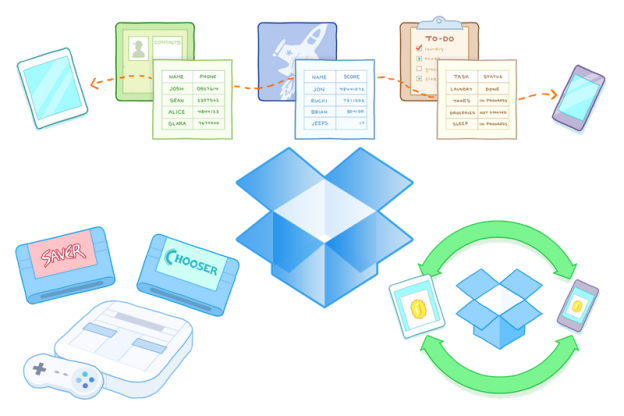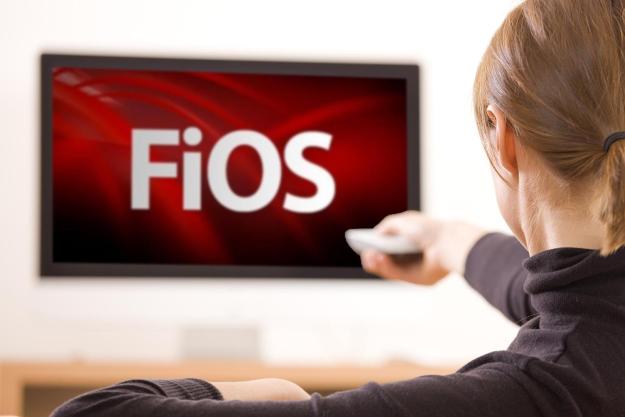
Dropbox is one of the best known file hosting and sharing services, particularly on smartphones. There are now 175 million Dropbox users around the world. But Dropbox is beginning to go through some big changes. It still plans to store your photos, videos, and files, but its eyes are fixed on a much larger target now: it wants to store and sync information used by apps. The possibilities are massive for Dropbox, and even cooler for us.
By getting apps to start using Dropbox to store cloud-based data, Dropbox could effectively become the hub for all your digital needs. It could be the link between all your information whenever you switch devices. It will be able to sync all of your data between different devices (tablets, phones, etc) you use, regardless of whether they run Android or iOS, and all with the minimum of input from you.
If this sounds familiar, it’s because similar services already exist, including Apple’s iCloud and Windows SkyDrive, but Dropbox is not tied to a single operating system. It claims its cross platform nature and apparently easy to implement code sets it apart from the competition.
The service, which goes by the name Datastore, was recently launched at a Dropbox developer conference. Let’s take a look at some of the the real-world benefits of Dropbox’s Datastore.
 On or offline, cross platform, app data sync
On or offline, cross platform, app data sync
Dropbox Datastore can take your application data, which means anything from your contacts and individual app preferences, to high scores and progress in a game, collect it, back it up, and sync to each one of your devices automatically. Helpful if you own both a smartphone and a tablet, and use the same apps on each.
It doesn’t require a stable Internet connection, either. Datastore is designed to collect information when the device is offline, and then sync up with Dropbox when a connection is established. If you’re struggling to think of when this would be helpful, how about when you work, take notes, or play games when on a plane? Any progress you make while in Airplane mode will be stored locally, then transferred once it’s switched off and a connection is re-established.
It’s not only in the air where this could be handy, but also for anyone who uses a Wi-Fi-only tablet to work or play games. Any changes made while out of Wi-Fi range won’t be lost, but stored once you’re back at home or connected to a public Wi-Fi network. It’s also good news for anyone who lives or works in an area with patchy network connectivity, as everything from edits made to an image to pearls of wisdom in a Notes app will all be not only saved, but available on all your other connected hardware, too.
While some of the big name e-book reader apps, such as Kindle and Kobo, sync books and even bookmarks across multiple devices, others don’t. The excellent Bluefire Reader for iOS is available for both the iPhone and the iPad, but your library must sync using iTunes, and your bookmarks are lost in the process. Dropbox Datastore would be a welcome enhancement to this already useful app, and negate the need to fiddle around with iTunes.
Every app could work like Evernote
You could compare Datastore to the way Evernote works. Notes written in the app are synced between other Evernote apps installed on iOS devices, Android devices, and Evernote on your PC desktop, so your documents are always available no matter what device you’re using. Datastore will do the same thing, but without requiring you to have a separate login for every single application you use, and trust that your data is safe in all these disparate places. And, just to clarify, it’s not just for notes, but for any user-definable data relevant to an app – a continually changing to-do list is only the start. Datastore can be integrated into any app, not just one produced by Dropbox.
We all have our favorite apps and many of them are available on both a phone and a tablet, but developers who already incorporate cross-platform or cloud syncing into their apps, such as Evernote and 1Password, have the financial clout to do so. As Dropbox is doing the majority of the heavy lifting with Datastore, it may finally be possible for app developers without seven-figure budgets to offer inter-device syncing to their users.
Dropbox Datastore is still in beta, so isn’t ready to connect your apps yet, but one keen team of developers – Xamarin, experts in cross platform app development – has already got it working in a test app, and it’s a great example of what the service can do. The app is called MonkeyBox, and all it does is allow pictures of monkeys to be dragged and repositioned on the screen. However, with the Datastore API installed, each time a picture is dragged to a different spot, it’s replicated in a second copy of MonkeyBox installed on another phone, connected to the same Dropbox account. An animated image shows MonkeyBox and Datastore in action. On the development side, Xamarin describes it as a, “Pretty simple API,” which is excellent news; the easier features like this are to implement, the more developers will add them to their apps.
Succeeding where the big names have failed
Apple’s iCloud, which is supposed to do something very similar to Datastore, is a notorious pain to use, with one developer speaking to ArsTechinca calling it, “A joke,” while others describe it as a frustrating, slow, and problematic system which refuses to work in the way they expect. Of course, there are likely some people who think iCloud works perfectly, but inconsistent performance hasn’t ingratiated iCloud sync with Apple developers, and its adoption is low compared to other Apple services.
Apparently, with Dropbox, all that’s needed for the syncing to work is for the user to be signed into their account, and for the Dropbox app to be installed on the device. While this sounds simple enough, and 175 million user accounts isn’t a small number, it could stem the tide of developers jumping on the Datastore API. Cloud storage is popular among tech-savvy users, but convincing those who aren’t familiar with it to sign-up and install the app may not be easy, and adding Dropbox sync into an app is only worthwhile if it’s going to be used. Its cross platform functionality may also be of limited appeal. While many people own a phone and a tablet, many of them use the same operating system for both.
There’s one other thing to consider, and that’s the cost. A Dropbox account is free and comes with 2GB of space, plus you get 500MB extra every time you refer someone. Unless you grab one of Samsung or HTC’s special deals where a phone comes with free Dropbox space, if you want more space, a 100GB Dropbox of your own costs $10 per month. The basic 2GB limit fills up fast with photos, videos and files, and that’s before we talk about app data at all. Luckily, app data isn’t going to take up much space. But somehow, we don’t expect all this app syncing to be free.
Still, the knowledge that not only our files and photos, but also our app data, is safely backed up in the cloud is appealing to everyone. We don’t really care how it all works. In the end, it just needs to do its job, and do it with minimal set up and maintenance. Dropbox Datastore is what iOS users wanted from iCloud, but Apple hasn’t really delivered, and as for Android, Google announced Cloud Save (which syncs app and game data across devices) at Google I/O but hasn’t made a big deal of it since.
Can Dropbox swoop in and bring us no-nonsense cross platform data sync, where the big names have failed? It may depend on our willingness to sign up, but if it’s as easy as it makes out, it may bring us one step closer to data freedom on our mobile devices.
Editors' Recommendations
- What Apple’s iCloud encryption update really means — and why you should care
- iCloud doesn’t encrypt your data, but these cloud storage apps do




